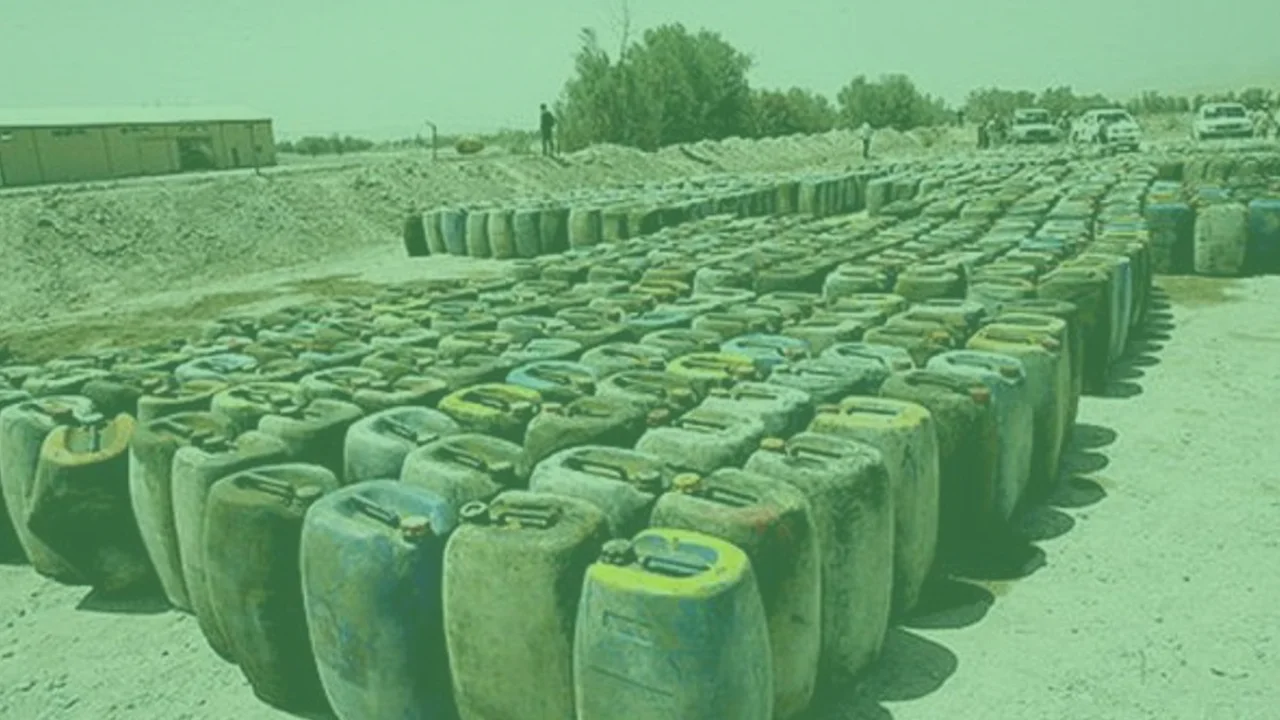Smuggling Subsidised Fuel Out Of Iran
The Iranian media tend to show clips of local smugglers on motorbikes carrying large Gasoline cans across the border. However, smuggling millions of litres per day requires much more sophisticated organisation and support of border control teams. The small scale smuggling by local people is a tiny portion of the larger fuel smuggling out of Iran. There are reports that around 10 million litres of Gasoline are smuggled out of Iran every day (Tehran Times, Nov 2020, Smugglers of fuel, livestock fined $570m). Some members of Iran’s parliament have claimed that the real figure is around 20-22 million litres per day. This is only for gasoline smuggling and other fuels such as Diesel are also smuggled on top of these volumes. Naturally, it is difficult to have exact figures for smuggled fuel as it is not possible to measure it accurately.
The three neighbouring countries that most of Iran’s Gasoline is smuggled to are Afghanistan, Pakistan and Turkey. If we take an average of 19,000 Toman/Litre for the gasoline price in these three countries, then based on the lower end of the scale (i.e. 10 million litres per day), the daily value of Gasoline smuggling is 190 Billion Toman and on an annual basis is around 70 Trillion Toman (equivalent to $2.8 Billion assuming 25,000 Toman/$ exchange rate). At the higher estimate of 22 million litres per day, this figure jumps to 153 Trillion Toman per year ($6.1 Billion). This is not accounting for other fuels that are smuggled, such as Diesel.
Why is there so much incentive for smuggling fuel? The Iranian government provides a massive subsidy for transport fuels such as Gasoline and Diesel. As a result, the price of Gasoline in Iran is considered one of the lowest in the world. In fact, only Venezuela has a cheaper domestic price for Gasoline than Iran. Figure 1 shows the average price of Gasoline in Iran, Afghanistan, Pakistan and Turkey at present.
The price differential relative to the price of Gasoline in Iran is shown in Figure 2. The Gasoline price in Iran (rationed price with coupons) is 1,500 Toman/Litre and the open market regular gasoline price is 3,000 Toman/Litre. Whereas Gasoline prices in Afghanistan are almost 10 times more expensive than Iran and 12 times more expensive in Pakistan. In Turkey, Gasoline prices are even higher, around 17 times more than Iran. This creates a massive incentive for smuggling.
It is understandable that increasing transport fuel prices are not popular in Iran and the government is reluctant to increase prices, especially considering the massive demonstrations of Aban 1398, which led to a violent crackdown by the regime. However, there are also vested interests within the system to continue the smuggling. If we assume that a local smuggler can carry 250 litres of fuel on his bike, which is a large volume (equivalent to 250 bottles of water) and is a heavy weight of around 200 Kg, then to carry 22 million litres on a daily basis will need 88,000 bike rides across the border. You will need thousands more bikes to carry the additional Diesel as well. It is highly unlikely that small scale local smugglers could move such large volumes.
While Gasoline is being smuggled out of Iran, the government is buying large volumes of Gasoline from the International markets to feed the local demand in Iran. According to the data available from the Iranian government, 12.63 million litres per day were imported in 1396 (see Figure 3). The Oil Ministry announced that Gasoline imports will be reduced since the start-up of the Persian Gulf Star Refinery at Bandar Abbas two years ago, which is reflected in the 1397 data in Figure 3. Assuming that the average delivered price for Gasoline into Iran is $0.5/Litre (12,500 Toman), then Iran spent 158 Billion Toman per day, which is 58 Trillion Toman (equivalent to $2.3 Billion) to import Gasoline in 1396. In effect, Iranian people are paying to import Gasoline at world prices for their own cars whilst we are subsidising drivers in Afghanistan, Pakistan and Turkey.
It is likely that small-scale volumes would continue to be smuggled by the local people out of Iran. However, large scale smuggling seems to be organised and requires support of the government officials. This large scale, organised effort also brings with it associated issues such as the violence and deaths that were seen in Sistan & Baluchestan province recently, as well as the massive money laundering that is needed to bring such vast amounts of cash into the banking system. If the Iranian government wanted to stop the large scale smuggling of fuel out of Iran (say around $5-6 Billion per year) and stopped the importation of Gasoline (say around $2 Billion per year), that means $7-8 Billion per year that could be spent on creation of jobs, building new schools and new hospitals.



